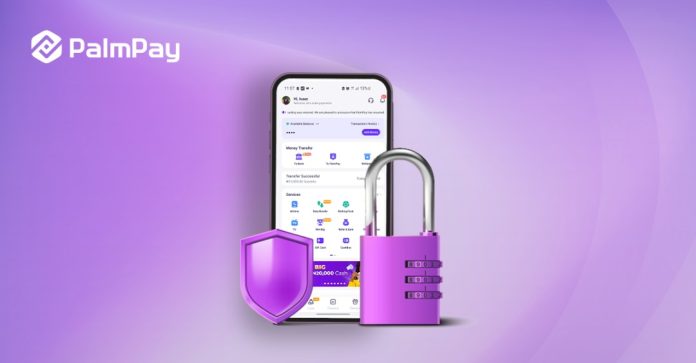In today’s digital age, securing your financial transactions and personal information is more important than ever.
According to the 2023 NIBSS Annual Fraud Landscape report, incidents of “Fraud loss via Internet Banking increased by 325% between 2022 and 2023, with Mobile, Web and POS being the most exploited channels by fraudsters in the country.”
At PalmPay, we prioritise the security of our users’ accounts, ensuring that your financial activities are safe and secure. But we also require you to be informed on the right steps and actions to take to secure your account. Here are eight crucial steps to help you secure your PalmPay account:
1. Create Strong Passwords
Passwords should be complex but easy to remember. To prevent your account from being hacked, use a complex password with a mix of uppercase and lowercase letters, numbers, and special characters, for example (GOdsent123@) and avoid using easily guessable information like birthdays, pet names, names for passwords and numbers that appear in chronological order.
At the minimum, we advise you to change your password across all your online platforms every 3 months.
2. Enable Two-Factor Authentication (2FA)
Where applicable, enable two-step authentication for your online banking to ensure an extra layer of security. Because this requires that a second form of verification is sent to your mobile device, it makes hacking your bank account difficult. Users of the PalmPay app can enjoy its built-in safety and security features.
3. Monitor Your Account Regularly
Safety may begin with ‘S’ but it starts with ‘You’. The human component of safety is as important as the technology side. Bank security measures are not enough to protect your money; follow safety precautions to enhance your account security. You are less prone to financial attacks when you keep an eye on your bank statements and transaction history and immediately report any discrepancies to your bank customer support
4. Do Not Disclose Your PIN, Password and OTP
Your PIN is called a Personal Identification Number for a reason. You must avoid sharing such and other sensitive information and be cautious about sharing your personal information online, especially on social media. Thread carefully when using a bank or making payments through a point of sale (POS). Always stay vigilant and watch out for possible irregularities while patronising POS agents.
In addition, don’t disclose your password and OTP (One-Time Password) to anyone.
5. Regularly Update Banking Apps
Failure to regularly update your banking app leaves your account open to fraudsters. This is because the latest bank app updates often include security enhancements like PalmPay’s auto-logout feature. This security feature requires users to always input their PIN when they reopen the app after each logout.
6. Check Your Transaction Again
We understand how busy we could be in our day-to-day activities but you can always take an extra to check your transaction details before paying. Avoid falling into the trap of erroneous transactions by having a second look at the transaction.
With the PalmPay app, you get a warning pop-up to confirm the transaction details before paying.
7. Beware of phishing attempts
There are going to be numerous phishing attempts during this period. Be cautious about emails, messages, or phone calls asking for personal information. Do not click on links or download attachments from suspicious sources. Legitimate financial platforms like PalmPay won’t call, text or email requesting your personal information.
8. Education, Education, Education
Educate yourself by staying informed about common scams and fraud tactics, and be cautious about clicking on links in emails or text messages, especially if they seem suspicious. We are big on financial literacy in PalmPay. Take advantage of our Wallet Safety Workshops to educate yourself on best safety practices via our social media platforms or website www.palmpay.com




